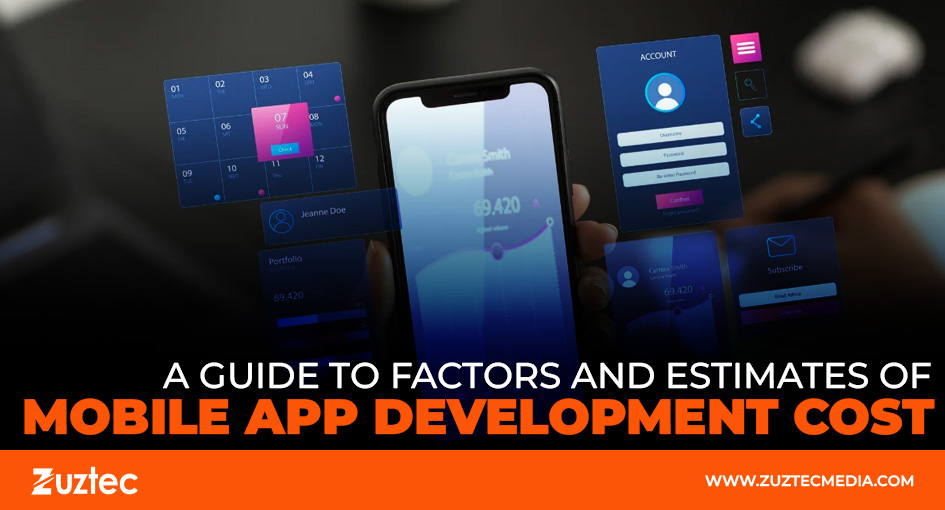
A Guide to Factors and Estimates of Mobile App Development Cost
In today’s digital world, mobile apps have become essential for businesses seeking to engage with customers, provide services, and build brand loyalty. From small startups to large enterprises, mobile apps have proven to be a valuable asset for growing a business. However, before embarking on the journey of app development, one critical aspect to consider is the mobile app development cost.
Understanding the factors that influence app development cost can help businesses set realistic expectations, plan budgets effectively, and choose the right development approach.
What Factors Influence Mobile App Development Cost?
1. App Complexity
A simple app with basic features such as information displays or static content will cost significantly less than an app with complex functionalities like real-time updates, location services, or integrations with third-party APIs.
To break it down:
- Basic Apps: These apps typically include simple features like content display, search functionality, and static pages. They are relatively inexpensive to develop because they do not require advanced coding or a large amount of design work.
- Intermediate apps may include backend capabilities like as user authentication, push notifications, and data storage. They often involve more complexity but still don’t require heavy customization.
- Advanced Apps: These are high-end applications with sophisticated features such as artificial intelligence (AI), augmented reality (AR), and payment gateway integrations. These apps usually demand more resources, advanced programming skills, and extended development time, leading to higher costs.
2. Platform Selection: iOS vs. Android vs. Cross-Platform
Another key factor impacting mobile app development cost is the choice of platform. Developing an app for different platforms can significantly affect the overall cost, as each platform (iOS and Android) requires a unique codebase and development approach.
- Native Apps: Developing an app separately for iOS and Android will increase the cost because you will need separate teams, with different expertise, to build each version. For instance, iOS apps require Swift or Objective-C development, while Android apps require Java or Kotlin.
- Cross-Platform Apps: Cross-platform development frameworks like React Native, Flutter, or Xamarin allow developers to write a single codebase that works across multiple platforms. While this can be more cost-effective, it may not offer the same performance and customization as native development.
- Hybrid Apps: These apps run on multiple platforms but may rely on web technologies, which makes them less expensive to develop. However, they might not provide the same user experience as native or cross-platform apps.
3. Design and User Experience (UX/UI)
The design and user experience (UX/UI) of an app play a critical role in its success and also impact its development cost. A well-designed, intuitive interface can drive user engagement and retention, while poor design can lead to app abandonment.
- Basic Design: If the app only requires simple UI/UX elements and templates, it will be more affordable to develop. This is common for apps with limited features and a minimalistic approach.
- Custom Design: Apps that require custom graphics, animations, and unique user interactions will incur additional costs. Custom design adds more time for both designers and developers to implement and refine, driving up the overall mobile app development cost.
4. Backend Infrastructure and API Integration
Most mobile apps rely on backend infrastructure to store and manage user data. The complexity of the backend can significantly influence the mobile app development cost.
- Basic Backend: A basic backend infrastructure might include simple user authentication and data storage functionalities. This can often be built quickly using pre-built tools or third-party platforms, which helps to keep costs down.
- Complex Backend: For apps that require advanced functionalities, such as real-time data syncing, advanced user management, or heavy API integrations, the backend development will be more complex, requiring higher costs for both server management and database maintenance.
5. Development Team Location
Offshore development teams, particularly those in countries with lower labor costs like India or Eastern Europe, can offer more affordable rates. On the other hand, developers based in North America or Western Europe typically charge more due to higher living costs.
While choosing an offshore team can reduce costs, it is important to carefully evaluate the team’s expertise, communication skills, and experience. Sometimes, a slightly higher cost for a local or more experienced team can result in better quality, less oversight, and faster development timelines.
6. Ongoing Maintenance and Updates
Once the app is developed and launched, the work doesn’t end there. Mobile apps require continuous maintenance and updates to remain functional and competitive in the marketplace. The app development cost also includes ongoing maintenance costs, which cover bug fixes, compatibility updates, server costs, and adding new features or improving existing ones.
- Routine Updates: Simple updates, such as adding new content or small bug fixes, generally have a lower cost.
- Major Upgrades: Larger updates or changes that involve redesigning features, upgrading the backend, or adding new complex features may require significant investment.
Ultimately, when planning for mobile app development cost, it’s essential to consider the many variables that impact the final price. Factors such as app complexity, platform choice, design, and backend development all play a significant role in determining the cost of building a mobile app. Additionally, the location of your development team and the pricing model you choose will influence how much you end up spending.
Investing in a well-designed, functional app is crucial to building a successful mobile presence, and understanding the various costs involved will ensure that you can make informed decisions throughout the development process. Whether you’re building a simple app or a complex, feature-rich application, keeping these factors in mind will help you manage your expectations and budget effectively. In the end, understanding the full scope of development cost will lead to a smoother development process and a more successful app launch.

